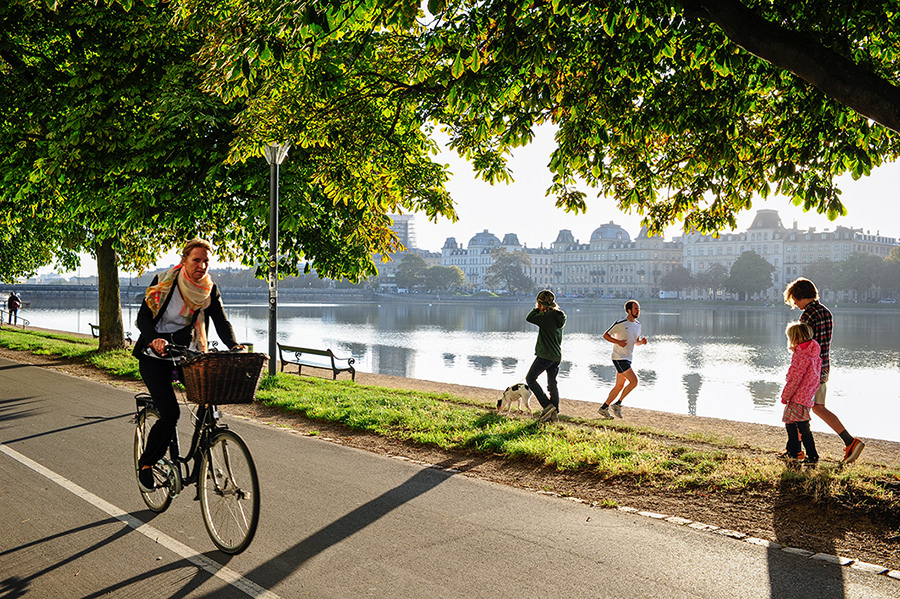
Talent, opportunity and engagement essential to successful cities
Daniel Kay Hertz is a senior fellow at City Observatory, a think tank that receives support from Knight Foundation to analyze cities and the policies that shape them. Below he writes on the subject for the Knight Cities Challenge, which will award $5 million for the best ideas to make the 26 Knight communities more successful. Applications are open through noon ET, Tuesday, Oct. 27. Apply at knightcities.org.
What makes a successful city? Maybe it’s easiest to start with an image of a successful neighborhood. Picture a place where people can get together—a small park, say. There are children playing in one area as their parents and grandparents watch from benches. Near the street, there’s a small market—an art fair, say, to raise money for a community group—and neighbors are perusing the stalls and making conversation, running into friends and acquaintances.
Near the park are some shops, which keep a steady stream of people walking by, so the park never feels vacant or forbidding. The people from the neighborhood can walk, bike or drive a very short distance to these shops—a hardware store, a cafe, a small grocery, a barber, a post office—to take care of most of their daily needs. Not only can they get a gallon of milk or mail a package without making a big inconvenient trip, but they know they might run into a friendly face, exchanging quick smiles or stopping for a chat as time permits.
The homes in the neighborhood fit the full range of people’s needs. There are houses with yards and large apartments for growing families; smaller apartments and backyard cottages for young people without children, and for the elderly who no longer want, or are able, to maintain a large home. The range of housing types means there’s a range of housing prices, so nobody is excluded from living here, and the neighborhood is a place where people who don’t earn much can hope to get a foothold towards a better life. The mix of single-family homes and apartments also means there are enough people around to support the community business district without huge parking lots meant to draw people from miles away.
The neighborhood is close to jobs. There are local jobs in the shops and the neighborhood school—also walking distance from most of its students’ homes—but it’s also a quick commute to downtown, via a reliable and frequent public bus, or a safe bike ride, or a fairly short drive. Traffic on local streets doesn’t zoom by at 45 miles per hour—the neighbors wouldn’t want that, because it wouldn’t be safe—but because the community is centrally located they don’t have to travel at highway speeds to get there fast. The neighbors are able to spend far less on transportation than people who live farther out, because they can take transit or walk for so many trips, and when they do drive they don’t have to go far. With extra room in their household budgets, they invest in home repairs, or better food for their families, or chip in to the local school.
This is a sunny picture, but it’s not unrealistic. If this, or something like it, is your vision of a successful neighborhood—and a successful city—the good news is that we have some idea of how to get closer to it. Vibrant, attractive community spaces, especially near hubs of activity like shops or transit stations, can help create places where neighbors can meet. Opening up our zoning laws (which have made places like the one I just described illegal in most American cities) can open the door to neighborhoods where you can run basic errands without getting in your car, and where a large range of housing types means there are homes for a large range of people, not just a few. Building a transportation system around access—the ability to actually get to the stores, schools and jobs that people need—rather than pure driving speed is crucial to safer, more humane and more affordable commutes. And attracting talent, especially people with college degrees, can help build a powerful local economy and grow jobs.
The Knight Cities Challenge is so exciting because it funds projects, and people, who are building great communities through many of these avenues. Even better, it empowers the people who know their neighborhoods best to create bottom-up change that’s distinctive to a given place, rather than trying to dictate a rigid one-size-fits-all program. Here at City Observatory, where we spend all day thinking about how to build more successful cities, we can’t wait to see what the next class of challenge winners comes up with.
Want to learn more about the Knight Cities Challenge? Attend a community information event or virtual office hours. Here is a schedule of what’s coming. You can follow the challenge at #knightcities on Twitter or sign up for our email newsletter. You can send questions to [email protected].
Recent Content
-
Community Impactarticle ·
-
Community Impactarticle ·
-
Community Impactarticle ·


